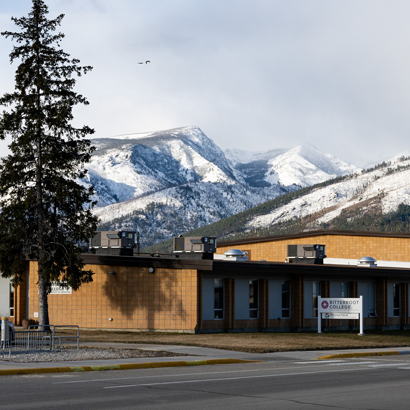Community Health Project
Video
Our Spring Semester 2022 Bitterroot College Environmental Science Class decided to do a Community Health Project by collecting nitrate and lead in local water supplies. We collected 40 water samples in total and sent them to a commercial environmental laboratory for analysis.
Twenty of our samples were to measure nitrate plus nitrite in drinking water and twenty were to measure lead in drinking water and to detect lead leachable to water in road materials. The road materials might have come from Curlew Lead Mine tailings, an abandoned lead mine northwest of Victor. If these materials were used as road gravel, as we’ve been told, then they could be polluting the lower basin Bitterroot River.
Results for Nitrate plus Nitrite
We tested 16 homes, mostly occupied by Bitterroot College students and their families. Thirteen of the homes have Nitrate plus Nitrite in the range of 0.11 to 1.76 mg/L, (mg/L is the same as ppm). The State recommendations are that all drinking water should be less than 15 ppm with respect to Nitrate plus Nitrite, so all the homes we tested are easily far below the danger level. We tested three homes that were non-detectable with respect to Nitrate plus Nitrite and those results are even better. We tested the drinking fountain at Bitterroot College and found it to have 0.31 ppm Nitrate plus Nitrite (Hamilton City water supply). And we used three samples as quality control and quality assurance that were duplicates of each other and or were blanks of distilled water.
Results for Lead
We tested 6 homes and 6 public building for lead in drinking water. The results are in parts per billion (ppb).
One of the homes is in the red danger level for lead at 77 ppb lead, which means action should be taken to remove old lead plumbing before using the water and in any case the faucets should be flushed for at least three minutes before drinking or cooking with the water. One home is in the take-action level at 6 ppb lead, which means the problem should be fixed or at a minimum water should be flushed from the pipes daily or any time before drinking or using for cooking. Two homes are in the warning zone at 1 and 2 ppb for lead. Lead should not be above 1 ppb, especially if children are exposed to drinking the water. Two of the homes tested were non-detectable for lead in the water, which is even better.
Test results indicate a school building at Corvallis was 7 ppb lead, which means action should be taken to fix the problem or the water should be flushed daily, and every time before drinking. Test results indicate a school building at Hamilton was 15 ppb lead, and should be shut down if it is used for drinking water. A public church at Grantsdale tested 4 ppb lead and should be fixed or flushed daily and always flushed for three minutes before used for drinking or using for cooking.
We tested the water discharge to the Bitterroot River from the Hamilton Water Treatment (sewer) Plant and found it to be 1 ppb lead. Lead levels discharged to the river should never be above 1 ppb.
We tested a combination of 6 stream sediments and gravel road base materials to look for leachable non-point-source lead pollution that could be reaching the Bitterroot River. The 2014 TMDL report from Montana Department of Environmental Quality identified lead levels above standards for lead in the Bitterroot River downstream of Stevensville and there is no explanation so far by anyone as to where the lead pollution is coming from. We decided to try investigating.
Using a Shake Flask method to determine if lead could be leaching from these stream and road materials and reaching the Bitterroot River we found that 3 of the samples contained strong leachable lead signatures ranging from 12 ppb to 68 ppb lead. This Shake Flask method is a qualitative measure and the lead leaching levels could actually be enormous because of the tonnage of sediments and road materials involved. We determined, using a control, that there could be a lead background level of 6-7 ppb lead in gravels mined in the valley for the purpose of road materials. One sediment sample was non-detectable for lead, which was good. For quality assurance we tested distilled water and obtained a non-detectable result for lead from the lab analysis, which is expected and good.
We used Energy Laboratories at Helena to analyze all of our samples. The cost was $1000 paid for by donations from students, faculty, and community members.
George Furniss, MS, Geosciences Faculty, Bitterroot College UM
Students, teacher identify lead in some local water, Michael Howell, Bitterroot Star, April 20, 2022
